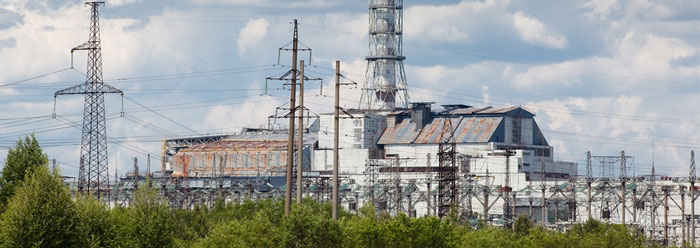Twenty-five years ago, the nuclear reactor at Chernobyl in northern Ukraine melted down in a radiation-spewing catastrophe. The reactor was capped with tons of concrete and a wide surrounding area called the "exclusion zone" has until recently been deemed off-limits. But in the last few years, scientists have been allowed to investigate the area, and instead of a wasteland full of mutated life, they have discovered a vibrant ecosystem.
For the first time since the accident, non-scientists will be able to participate in official tours to the site this year, according to a New York Times blog.1 They will witness firsthand the resilience of living forms that have flourished there.
Although the meltdown event had killed a nearby pine forest, 2 soybeans and flax growing inside the exclusion zone were found to be "relatively unaffected by radiation." Martin Hajduch of the Slovak Academy of Sciences told CNN that "in the stem or leaves there is radioactivity, but it is somehow blocked and doesn't come to the seeds."3
Who would have expected plant seeds to exhibit radiation-mitigating strategies? Such a capability is not easy to explain apart from a Creator's intended design.
But perhaps more remarkable was the 2007 discovery of a black fungus that not only tolerates radiation, but feeds on it!4 Scientists at the Albert Einstein College of Medicine in New York investigated possible mechanisms to explain how the fungus, samples of which had been retrieved by a robot, was growing so well amid the radiation.
They suspected that the dark color, caused by melanin, was part of the reason. In a study published in the online journal PLoS ONE, they found that the fungus at Chernobyl grew "significantly faster" in the laboratory when subjected to radiation that was 500 times higher than background levels.5
Lead author Ekaterina Dadachova said in an Einstein College news release, "Just as the pigment chlorophyll converts sunlight into chemical energy that allows green plants to live and grow, our research suggests that melanin can use a different portion of the electromagnetic spectrum—ionizing radiation—to benefit the fungi containing it."4 The evidence shows that the melanin present at the outer surfaces of the organism captures and converts radiation into usable energy via ingenious associated chemical machines.
How are seeds able to block radiation, and how does fungus acquire the ability to feed on radiation? The answer is "clearly seen" as superior biological engineering by the Creator.6
References
- Rudolf, J. C. On Our Radar: Chernobyl to Open to Tourists. The New York Times Blog. Posted on green.blogs.nytimes.com December 14, 2010, accessed January 20, 2011.
- Anspaugh, L. R. 2008. Environmental Consequences of the Chernobyl Accident and Their Remediation: 20 Years of Experience. In Chernobyl: Looking Back to Go Forward. Vienna: International Atomic Energy Agency, 47. Proceedings of an international conference held in Vienna September 6-7, 2005.
- Knight, M. Chernobyl: Environmental dead zone or eco-haven? CNN. Posted on cnn.com January 14, 2011, accessed January 20, 2011.
- Einstein Researchers' Discovery of "Radiation-Eating" Fungi Could Trigger Recalculation of Earth's Energy Balance and Help Feed Astronauts. Albert Einstein College of Medicine press release, May 23, 2007.
- Dadachova, E. et al. 2007. Ionizing Radiation Changes the Electronic Properties of Melanin and Enhances the Growth of Melanized Fungi. PLoS ONE. 2 (5): e457.
- Romans 1:20
* Mr. Thomas is Science Writer at the Institute for Creation Research.
